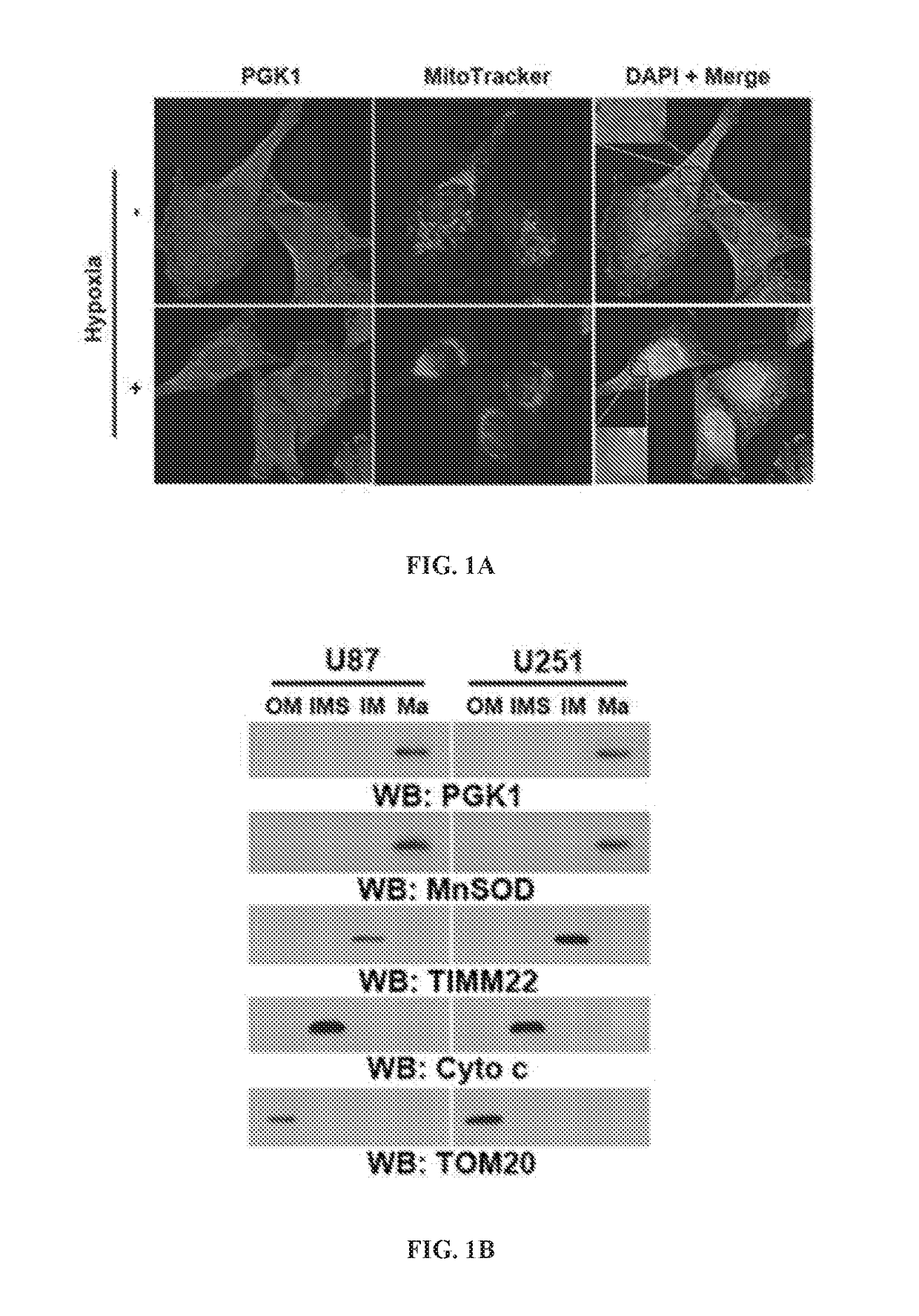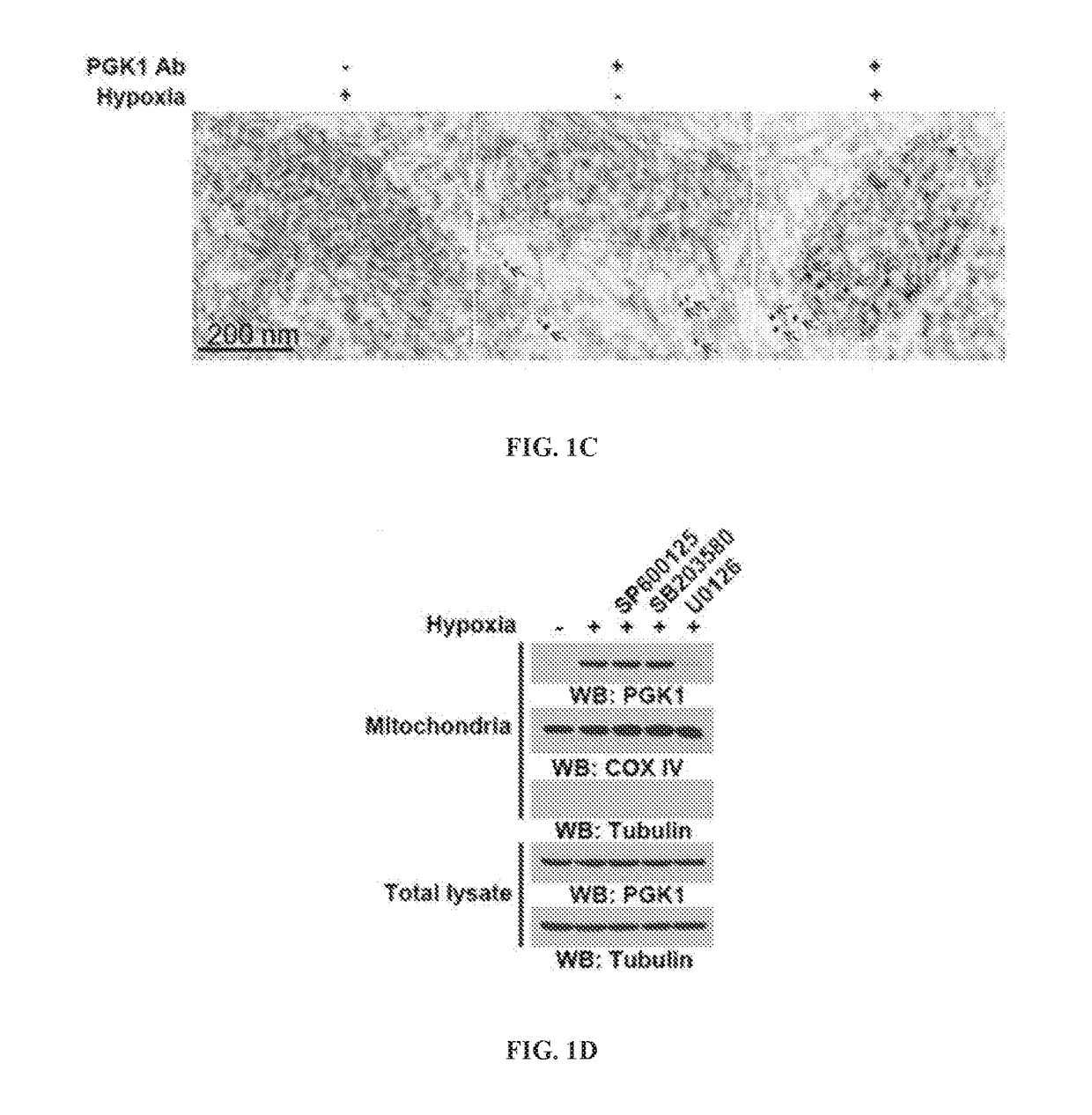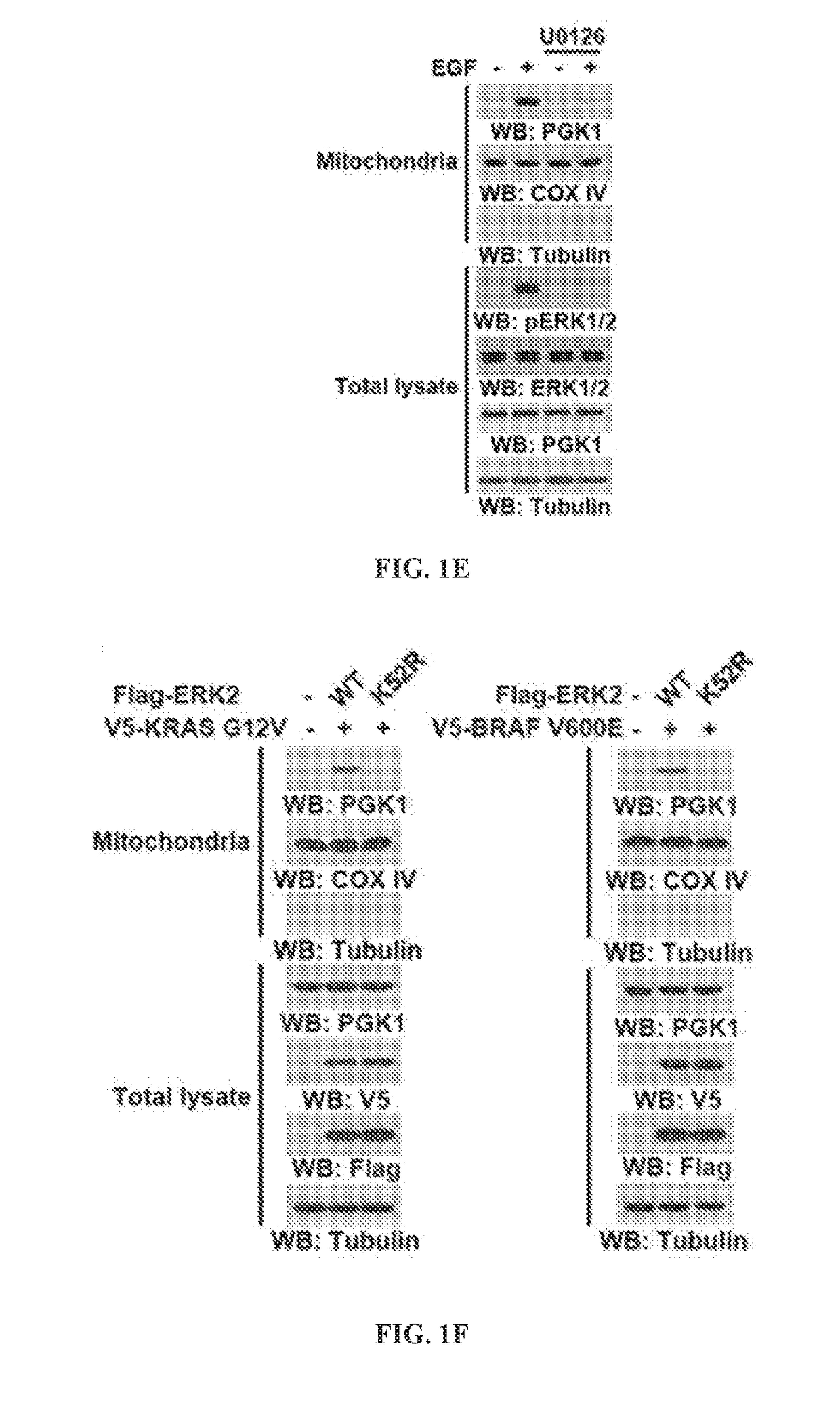The protein kinase activity of phosphoglycerate kinase 1 as a target for cancer treatment and diagnosis
- Summary
- Abstract
- Description
- Claims
- Application Information
AI Technical Summary
Benefits of technology
Problems solved by technology
Method used
Image
Examples
example 1
and Activation of EGFR, K-Ras, and B-Raf-Induced Mitochondrial Translocation of PGK1 is Mediated by ERK1 / 2-Dependent PGK1 S203 Phosphorylation
[0184]In solid tumors, hypoxia appears to be strongly associated with tumor growth and progression (Koppenol et al., 2011; Hockel and Vaupel, 2001; Caims et al., 2011). To test whether PGK1, an ATP-generating enzyme in the glycolytic pathway, has any subcellular compartment-dependent function, cells were exposed to hypoxia and the cellular distribution of PGK1 examined. U87 human glioblastoma (GBM) cells were incubated under hypoxic conditions for 6 h (FIG. 1A). Immunofluorescence analyses with an anti-PGK1 antibody showed that hypoxia induced the perinuclear accumulation of PGK1. Because mitochondria also localize at the perinuclear region, the cells were co-stained with the anti-PGK1 antibody and MitoTracker, a fluorescent mitochondrial dye. As shown in FIG. 1A, PGK1 co-localized with mitochondria, suggesting that PGK1 translocates to mitoch...
example 2
s to and Cis-Trans Isomerizes Phosphorylated PGK1 for Mitochondrial Translocation of PGK1
[0192]ERK-phosphorylated Ser or Thr in pS / TP-peptide sequences can be recognized by the peptidylproline isomerase Protein Interacting with Never in Mitosis A 1 (PIN1), which catalyzes their cis-trans isomerization (Lu and Zhou, 2007; Zheng et al., 2009). PIN1 regulates subcellular redistribution of its substrates (Yang et al., 2012). Whether ERK-regulated PGK1 phosphorylation leads to PIN1-dependent conformational change of PGK1 was determined and subsequent mitochondria translocation of PGK1. Coimmunoprecipitation analyses showed that hypoxia stimulation significantly increased the interaction between endogenous PIN1 and PGK1, which was blocked by U0126 treatment (FIG. 2A). In addition, hypoxia stimulation induced a strong binding of endogenous PGK1 to agarose bead-immobilized WT GST-PIN1 but not GST-PIN1 WW domain mutant, which prevents the binding of PIN1 to a pS / TP substrate (FIG. 2B). Compa...
example 3
lates Binding of PGK1 to the TOM Complex
[0195]Nearly all mitochondrial pre-proteins are imported via the general entry gate, which is the translocase of the outer membrane (TOM). Three receptor proteins, TOM20, TOM70, and TOM22, function as part of the TOM complex. TOM20 acts as a general import receptor and is the initial recognition site for substrates with presequences (Chacinska et al., 2009). Presequences, which are often located at the amino terminus of precursor proteins and form positively charged amphipathic a helices, are the classic type of mitochondrial targeting signals (Chacinska et al., 2009). A structural analysis of PGK1 revealed that it contains an a-helix (amino acids 38-53) at its N-terminus (FIG. 13A). Co-immunoprecipitation analyses showed that hypoxia stimulation resulted in an interaction between PGK1 and TOM20 (FIG. 3A). PIN1 deficiency abrogated this interaction, which was rescued by reconstituted expression of WT PIN1 but not the PIN1 C113A mutant (FIG. 3B...
PUM
| Property | Measurement | Unit |
|---|---|---|
| Size | aaaaa | aaaaa |
| Therapeutic | aaaaa | aaaaa |
| Level | aaaaa | aaaaa |
Abstract
Description
Claims
Application Information
 Login to View More
Login to View More - R&D
- Intellectual Property
- Life Sciences
- Materials
- Tech Scout
- Unparalleled Data Quality
- Higher Quality Content
- 60% Fewer Hallucinations
Browse by: Latest US Patents, China's latest patents, Technical Efficacy Thesaurus, Application Domain, Technology Topic, Popular Technical Reports.
© 2025 PatSnap. All rights reserved.Legal|Privacy policy|Modern Slavery Act Transparency Statement|Sitemap|About US| Contact US: help@patsnap.com



